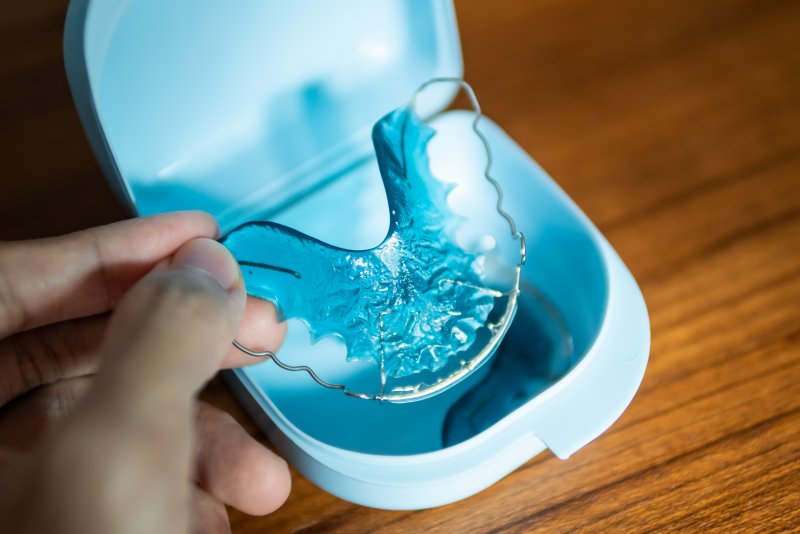
After spending months or even years realigning your teeth, you’re finally getting your braces removed. While this phase of orthodontic treatment is over, the next step – retention – is crucial to your long-term smile success. If teeth are to remain in their new location, and you want to secure your investment, read on to learn how to take proper care of your retainer so that you don’t experience a setback.
What is the Purpose of a Retainer?
Retainers are oral appliances worn after braces are removed or aligners are no longer necessary. Once your teeth reach their final destination, your orthodontist will suggest switching to a retainer so that your smile will remain firmly in its new location.
It’s too easy for teeth to shift back to their original position because they have yet to integrate; however, with a customized oral appliance – retainer – this problem becomes a non-issue.
How to Take Care of a Retainer
When taking care of this new device inside your mouth, you’ll need to adopt a few practices to ensure it remains intact and fully functional so that your teeth don’t start to shift. You can do this by:
- Removing your retainer before eating – You don’t want food and bacteria becoming trapped in your retainer, and you don’t want to accidentally break it by biting down on something hard. It’s best to remove it before eating so that it doesn’t become damaged or harbor harmful particles that can negatively affect your smile.
- Place it in a protective case – When removing your retainer to eat or before a speech, keep it in a protective case. Placing it in a napkin can lead to it accidentally being thrown away, and placing it in your purse can cause it to become damaged.
- Clear it regularly – Your retainer needs to be cleaned before placing it in a protective case. If you only wear it a few times a week at night, remove any built-up bacteria and tartar. All you need is a soft-bristled toothbrush and toothpaste. You can also place your retainer in a glass of water.
- Avoid boiling your retainer – Hot, boiling water can warp the plastic and metal that make up your retainer, so stick to using only lukewarm water.
- Take it out when brushing your teeth – Removing your retainer before completing your normal oral hygiene routine will ensure you adequately care for your teeth and gums without having your appliance get in the way.
Make the most of your investment by taking care of your new retainer. Doing so will keep your smile in its proper location so that you can reap the benefits of a straighter set of teeth for the rest of your life.
About the Author
Dr. James Hart earned his bachelor’s degree in chemistry from Austin College before graduating in the Top 10% of his class at Baylor College of Dentistry, achieving his Doctor of Dental Surgery degree. He also completed a master’s degree and finished his orthodontic residency at the University of Chicago Pritzker School of Medicine. Dr. Hart has provided high-quality orthodontic care since 1978, and he stays up to date on the latest advancements in the field of orthodontics. When it comes to providing retainers to patients, he and our team at Hart Orthodontics provide clear instructions on how (and why) to take proper care of this appliance. If you are preparing to say goodbye to your braces and hello to a custom retainer, contact us via our website or by calling (817) 645-2432.




